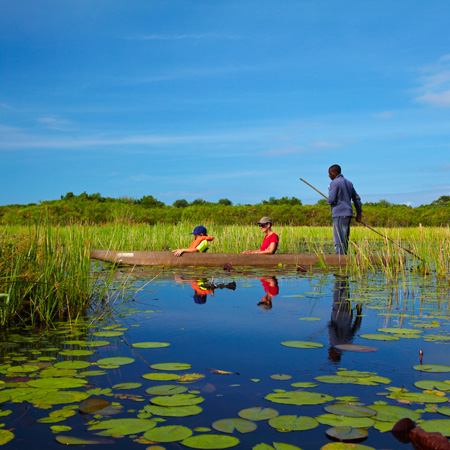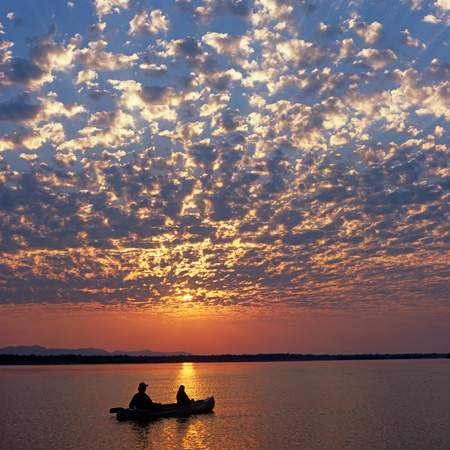Safari Terminology You Need to Know
As you dive into the world of safaris, you may notice it comes with its own lingo. Here’s a quick guide to the essential safari terms from GeoEx experts that will help you decipher the ins and outs of your wildlife safari.
Green Season
It’s springtime in Africa, and everything they say about baby animals is true. It’s not enough to see a majestic adult elephant: the tiny ones, so adorably fascinated with the splash of water and mud, steal your heart. You might spot an extra pair of tiny, skinny legs mirrored behind those of a full-grown zebra. Green season also draws the most reclusive beasts out—which, of course, is a delight to predators. They all mix through the contours of colorful waterways and burgeoning brush.
Green season is from November or December through May or June. Midday heat is avoided with naps or pool plunges, but morning and evening temperatures are just right for safari activities. As a further bonus, seasonal costs are lower and crowds are smaller.
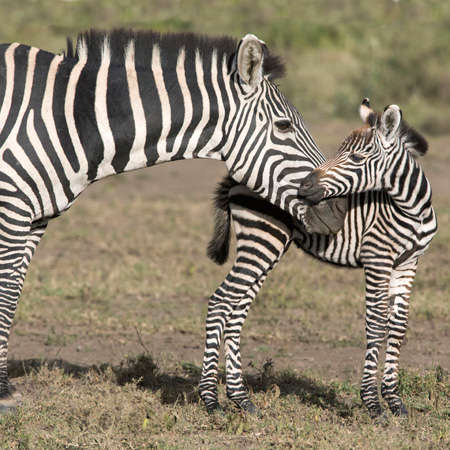
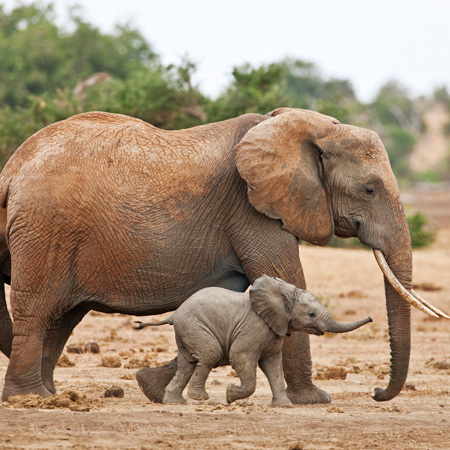
High Season
During the dry months (Africa’s winter), grasses are low and waterholes offer vital refreshment making animals easier to see. You’ll enjoy milder daytime temperatures, a lower risk of malaria, and a variety of activities, from guided bush walks to fishing. In the Okavango Delta, water levels rise, transforming the landscape and beckoning boat rides through meandering channels. In East Africa, the Great Migration unfolds—more than two million animals including some 200,000 zebra, 500,000 Thomson’s gazelle, and one-and-a-half million wildebeest cross the Serengeti-Mara ecosystem.
A high season safari can be combined with other highlights, such as the sardine run on South Africa’s wild coast or the whale migration. (Interestingly, winter brings rain to the Cape Town area, bringing flowering season for the famous fynbos.) And at this time of year, Victoria Falls runs with such explosive force that it’s only seen as a mist some days.
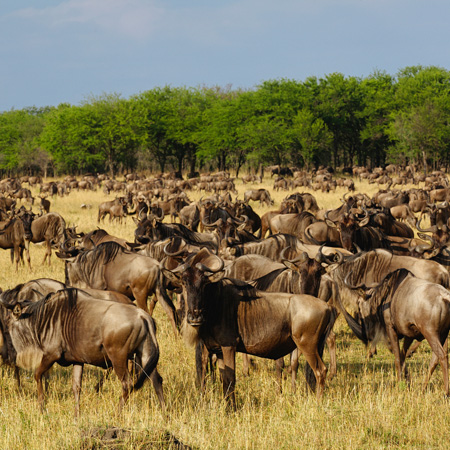

Mobile Safari
The quintessential way to experience Africa’s almost unimaginable plenitude of wildlife is to venture off the tourist treadmill into exclusive nature preserves. This can be done only by private mobile safari units—units that enable the traveler not simply to explore areas that very few have visited, but to visit them in unassuming luxury: spacious tents with proper beds, hot showers, fresh and beautifully prepared food, and more. We avoid so-called “mobile tented camps” that are really seasonal, semi-permanent little settlements (often in sight and sound of nearby lodges). Our luxury mobile tented camps are always truly moveable to secluded, private locations. And our mobile units’ vehicles are specially outfitted to take us into previously unreachable areas in amazing comfort.
Land Camp
The terrain on these sprawling concessions can change dramatically from patches of grass to acacia forests. Their watering holes draw the most flagrant mix of species into the most compact space, and you’ll often watch the activity from hide-outs nearby. If you want to avoid boats entirely, wildlife viewing centers on game drives in open vehicles is your best option. This is also the best choice if you’re looking to rapidly tick species off on your wildlife checklist.
Water Camp
These concessions may be next to a single river or a network of waterways. You may boat through the Okavango Delta, canoe down a river, or mokoro along lily-strewn lagoons. Many camps offer catch-and-release fishing. Be prepared to learn more than you wanted about how long hippos can hold their breath. This is the best choice if you’d like to try out a wider variety of safari activities.
